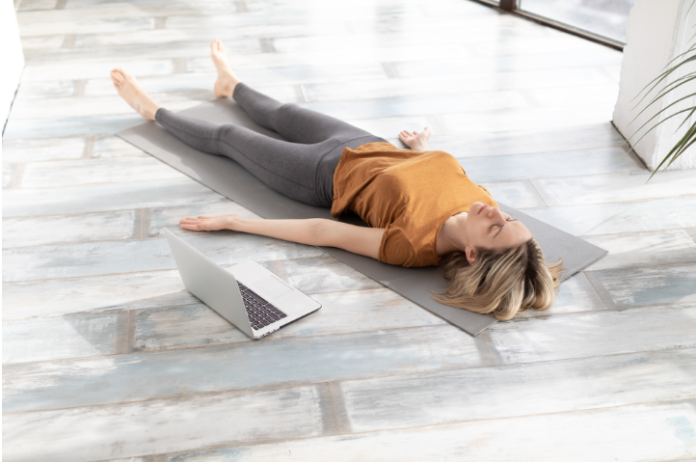Yoga nidra is a form of yoga also known as yogic sleep. It is a highly accessible meditation practice that leads a person to a deep state of relaxation and self-awareness. Here’s the thing: yoga nidra can be practiced with the help of an in-person guide, but it doesn’t have to be. It is both possible and perfectly acceptable to practice yoga nidra at home.
Note that yoga nidra is a guided practice. So practicing at home is more productive with the use of a mobile app or digital recordings. The help of a guide will lead you to that desired state of relaxation and self-awareness more effectively.
Are you ready to give it a try? Here is a step-by-step guide compliments of yoga nidra expert and international yoga educator Scott Moore:
Step #1: Create Your Space
Yoga nidra is most effective when practiced in a comfortable and quiet space. Create your space by choosing the most peaceful place in your home. This is a place where you will not be disturbed for 20 to 40 minutes.
Make sure there is a yoga mat, blanket, or cushions in your space. It could even be a bed. You just need to be able to lay flat. Eliminate all potential noise distractions as best you can. Wearing earbuds is okay.
Step #2: Establish an Intention
Yoga nidra includes something known as ‘sankalpa’. In plain English, sankalpa is a positive, simple intention or affirmation. Think of it as a goal. Your intention for one session might be to reach a place of peace. Another session might be focused on emotional healing.
Also establish a simple phrase that reflects your intention. This phrase will be uttered throughout the session with the purpose of planting seeds in your subconscious.
Step #3: Prepare Physically
With your intention set, it is time to prepare yourself physically. Lie down on your back and get comfortable. Any comfortable position will do if you are physically unable to lie on your back for a length of time. The goal is to be comfortable. If you can move your arms slightly away from your body, that is better.
Do not be afraid to make adjustments to feel as comfortable, relaxed, and supported as possible. The last thing you want is to be distracted by how you physically feel.
Step #4: Follow Your Guide
You probably won’t have a guide physically in the room with you when you are practicing at home. But you still need a guide. The previously mentioned mobile apps and digital recordings will do the trick. Let’s assume you’re using a mobile app.
Run the app and begin your session. Your guide will lead you through various practices, including body scanning, breath awareness, visualization, and emotional release. Just listen and follow along.
Time and Practice Are Your Friends
Don’t be disappointed or frustrated if your first session or two don’t seem to do anything for you. Yoga nidra takes time to master. Remember the adage that practice makes perfect. The more sessions you engage in, the easier you will find reaching that ultimate state of relaxation.
Moore says that consistency is the key to new yoga nidra practitioners. He recommends practicing daily if possible. Otherwise, at least a few sessions per week is a good idea. Consistency trains the mind and body to reach yogic sleep and release the subconscious. Learn more about Scott Moore’s Yoga Nidra guidance.
It is possible to practice yoga nidra at home. If you can take some classes, all the better. But do not let a lack of classes stop you from accessing all the benefits yoga nidra has to offer.
